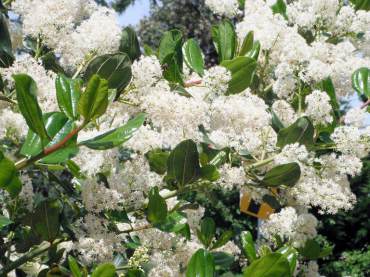
Do you have waterfront property? Does your house look out on magnificent views of the Puget Sound? Or perhaps you have a secluded lakeshore cabin. You may want to consider making your property friendly to wildlife.
On my property, there is a vernal pond that my husband dug several years ago. It is only about 2 feet deep and it dries up in the summer, but it is an excellent spawning habitat for the Pacific chorus frog. I provided my son’s elementary teachers with tadpoles every year.
When we bought it, the back of our property included a sphagnum bog filled with Douglas Spiraea and Labrador tea. Now, it is transitioning to a lake due to beaver activity. I was surprised to find “Sallywogs,” which hatched out once when I collected a huge, gelatinous egg mass. They were the larvae of Northwest salamanders.
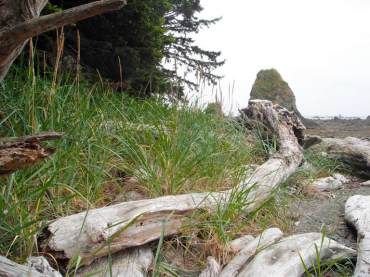
Water, food, shelter and places to raise young are the basic necessities for wildlife as well as for certifying your yard as a Backyard Wildlife Habitat with the National Wildlife Federation or the Washington Department of Fish and Wildlife.
If you are not fortunate enough to have a natural wetland, you can either build a pond or simply add a fountain or a birdbath. Just be aware that if you want it to be beneficial for wildlife, you may need to live with green, mucky water at times — adding algaecides or other chemicals, defeats the whole purpose.
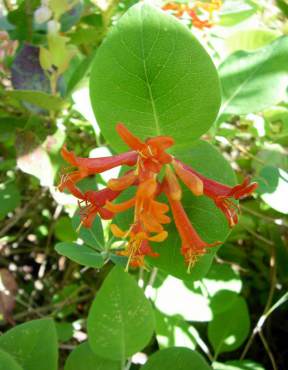
The same thing goes for the rest of your yard. Sticking with slow-release, organic fertilizers and avoiding pesticides will help to prevent poisoning of wildlife and contamination of watersheds.
The best way to provide food for wildlife is to plant native plants. Feeding wildlife directly is not generally recommended, but having a bird feeder can bring birds up close for educational purposes and for enjoyment. Birds are not as likely to become reliant on a food source, except during the nesting season, because they can fly away and find something elsewhere.
Hummingbirds prefer tubular flowers with red, orange or pink flowers. Our best native hummingbird flowers include Western columbine, Indian paintbrushes, trumpet honeysuckle, Cooley’s hedge nettle, red flowering currant and gooseberries.
Butterflies prefer yellow or orange, scented, tubular flowers with a landing platform and closely packed clusters of flowers. Some of the best nectar flowers are those in the sunflower or daisy family such as asters and goldenrods.
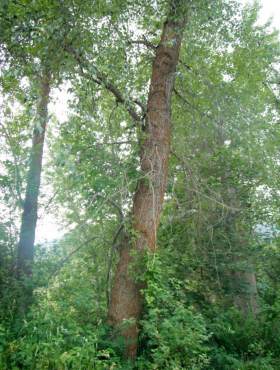
Other favorites are deerbrushes and stonecrops. If you want to attract butterflies, you need to provide plants for the caterpillars to eat as well as flowers for nectar. Many plants such as oaks, pines, willows, maples, roses, brambles and grasses may serve as larval hosts.
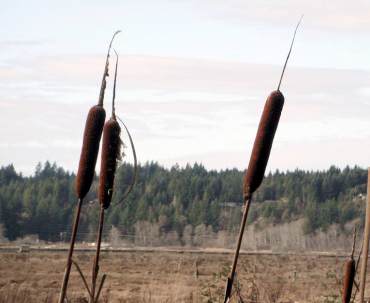
Pines and oaks have the highest wildlife food value. They provide nutritious seeds to jays, squirrels and other smaller birds and rodents. Berries such as elderberries, brambles, huckleberries and salal are also very important.
If a plant produces a fruit, something must have evolved to eat it — it is the plant’s way of getting an animal to disperse its seeds. The seeds of other trees such as true firs, spruces, Douglas firs, hemlocks, cedars, maples, birches, alders, hazelnuts and ashes are also important food sources for many animals.
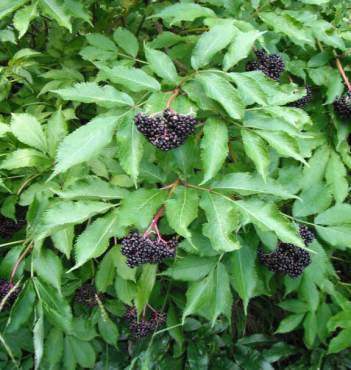
Grasses, “weeds” and wetland plants also have seeds, foliage or tubers that are eaten by wildlife.
Don’t forget that many animals prey on insects and other small invertebrates in your habitat, too.
Along with food plants, it is important to plant different layers of native plants to provide shelter and possible nesting sites. This means you want different sizes of trees, shrubs, herbaceous plants and ground covers.
The highest wildlife activity occurs where there is water nearby and at the edges of forests. An “edge” is the transition zone between forest and meadow. It contains a variety of shrubs and groundcovers and can harbor the greatest variety of wildlife.
Along saltwater shorelines, dunegrass creates good habitat and nesting sites. Along rivers and streams large cottonwood trees and maples provide shelter and nesting sites. Along the edges of lakes and ponds, Cattails are a favorite of many birds such as the red-winged blackbird; but it can be a very aggressive native.
For more choices of native plants for wildlife, check out the native plant selection guides at the Native Plants PNW website.





























